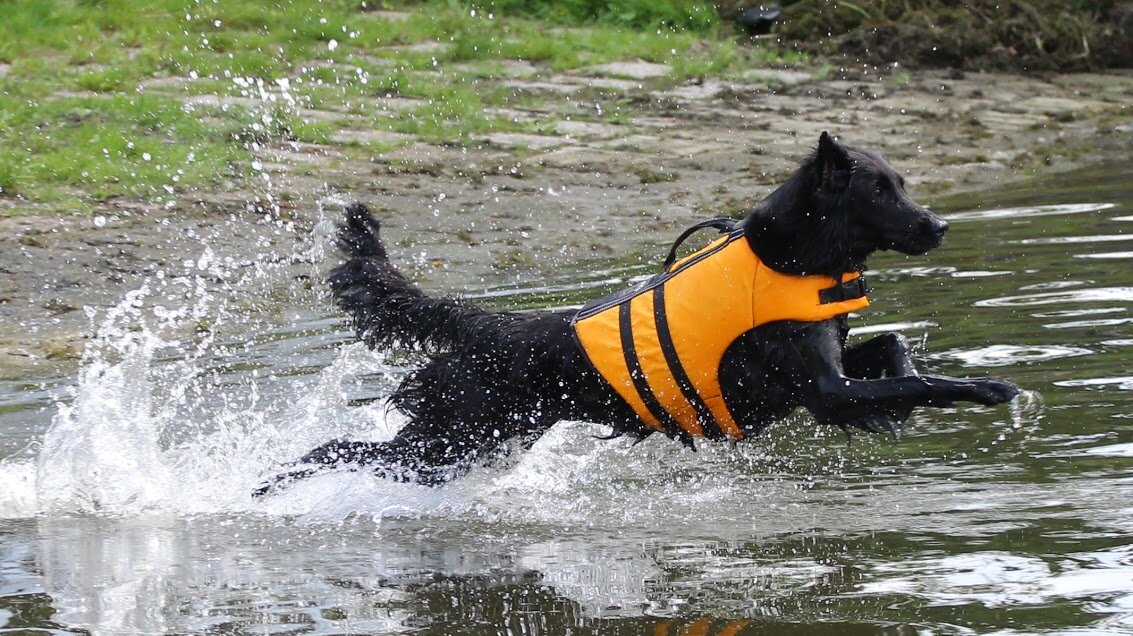
Swimming with your dog
Many dogs enjoy being in the water – swimming, playing or simply cooling off. It’s a fun way for them to stay active, strengthen their muscles and improve coordination. It’s also a great way to break up the usual routine. But not every dog feels confident in water right away. With a bit of patience and a few safety tips, a trip to the water can become a positive experience for both of you.
Why swimming is good for dogs
Moving in water is gentle on the joints, boosts endurance and helps improve your dog’s overall coordination. For our search and rescue dogs, swimming is also a proven method to build stamina and actively recover after intense training sessions.
Not all dogs are natural swimmers
While many dogs instinctively start paddling the moment they enter the water, that doesn’t necessarily mean they feel at ease or enjoy swimming. Some breeds – like retrievers or Newfoundlands – are naturally well-suited to water. Others have physical traits such as short legs or a flat snout that can make swimming more challenging. Some dogs simply need a bit more time and encouragement.
It’s important never to force your dog into the water or push them in. Entering calm, shallow water together helps build trust and lets your dog get used to this new environment at their own pace. A well-fitting life jacket can also help, giving your dog extra support and confidence while reducing physical strain.
What to keep in mind
- Choose a suitable spot: Look for shallow entry points, no strong currents and a quiet environment
- Keep play under control: If your dog repeatedly grabs toys in the water, they may end up swallowing quite a bit of it. In extreme cases, this can lead to water intoxication.
- Take regular breaks: Provide access to fresh drinking water and shady resting spots
- Watch for signs of exhaustion: Some dogs overestimate their energy levels and need clear rest times
- Mind the water temperature: Very cold water can put a strain on the cardiovascular system
- Care after swimming: Towel your dog off thoroughly, rinse with clean water if needed, and gently dry their ears
- Be aware of health risks: Murky or greenish water can indicate blue-green algae and should be avoided. Take extra care around stagnant water like puddles or ponds, which may pose a risk of leptospirosis.
A day by the water can be a real adventure for dogs – full of exercise, new experiences, and shared moments. By paying attention to your dog’s needs and following a few simple rules, you can make sure the fun stays at the heart of it all. And let’s be honest – isn’t that what it’s all about?
Author: Daniela Rupp
